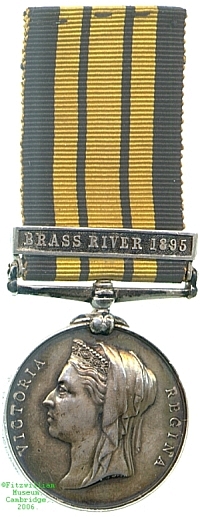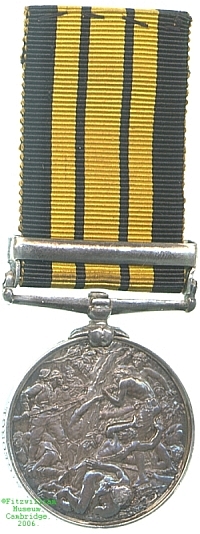East and West Africa Medal, 1895
Peace-keeping operations in the British possessions in Africa, as anywhere else, required a large number of small campaigns, several of which, from 1892 until 1900, were considered to merit this medal, which in terms of design is a continuation of the Ashantee War Medal. Recipients who held that medal already were therefore awarded only extra clasps.
The Brass River, or Benue River as it is now known, is a tributary of the Niger River, and in the 1890s the tribes local to it, whose ruler King Koko had his capital at Nimbe in modern Nigeria, were increasingly concerned about European inroads into the palm-oil trade, which threatened their livelihoods. In January 1895 the Royal Niger Company's station at Akassa was attacked and more than forty people killed. Reprisal was carried out by four ships of the Royal Navy within a month and Nimbe partially destroyed.
This medal was awarded to Gunner T. Blakeley of the Royal Marine Artillery, serving aboard HMS St George. The vessel was soon after active off Mombasa where its crew also earnt the striking of this medal for M'wele 1895-1896. (Her complement later earnt another medal which has ended up in the Watson Collection.) Lester Watson purchased the medal from the London dealers Spink at some point before 1928.

